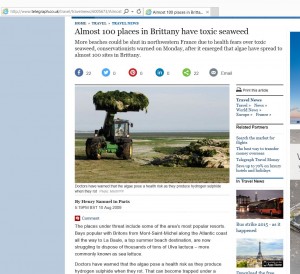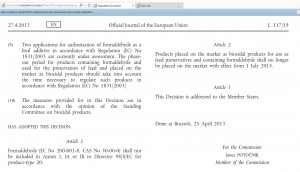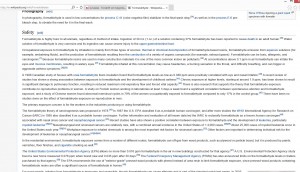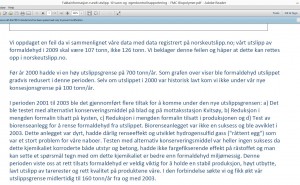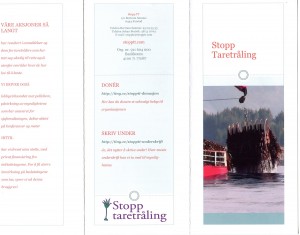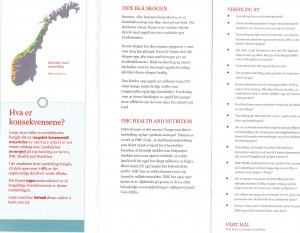From: Jens
Subject: Noen observasjoner i litteraturen 2009 og 1963.
Jeg leste et par rapporter om tare, og jeg fant et par interessante utsagn i disse. Kun for informasjon, men gir bra innblikk i hva som rørte seg for et par år siden.
Første fra 2009
(side 9 av 33) “Energiproduksjon kan for eksempel kombineres med ekstraksjon av alginat. Alginat utgjør 20-30% av tørrstoffet i tare slik at en produksjon på for eksempel 75 tonn våt vekt tare pr hektar kan gi et utbytte på 4,5 tonn alginat i tilegg til 6 tonn fermenterbart sukker. Det globale markedet for alginat er på ca 30 000 tonn og har en verdi på om lag 36 000-63 000 NOK pr tonn. 500 000 tonn tare dekker alginatmarkedet, og det kan derfor ikke budsjetteres med inntekter fra alginat utover dette, sammenholdt med data for høsting av tare til samme formål.”
“Frankrike, som høster ca 75tonn tare årlig, vurderer å forby tarehøsting på bakgrunn av for lite kjennskap til effekter på biodiversitet ved høsting og et ”føre var” prinsipp fra forvaltningen med hensyn til bærekraftig utnyttelse av marine ressurser.”
Siste fra 1963
Da Protan (forløperen til FMC Biopolymer) kjempet innbitt, og litt om opprinnelsen til taretråling.
(side 13) “Hvorfor Protan kritiserer innsatsen for å få klarhet i retten til tang og tare, stiller Sørensen seg helt uforståelig til, og konkluderer den lange redegjørelsen til NTNF med følgende: ”. . Jeg beklager å måtte meddele….”
(side 14) “Bare noen få måneder senere, i oktober 1963, gjentar Protan sine bekymringer og protesterer mot NITTs fortsatte kjemitekniske forsøk med alginatekstraksjon fra fersk stortare.” Så den industrien er ikke nybegynnere i å bearbeide sine omgivelser.
Vennlig hilsen
Jens
